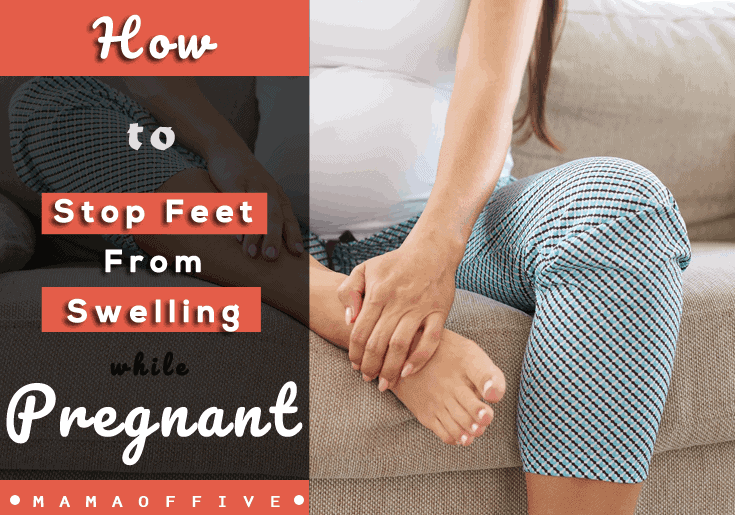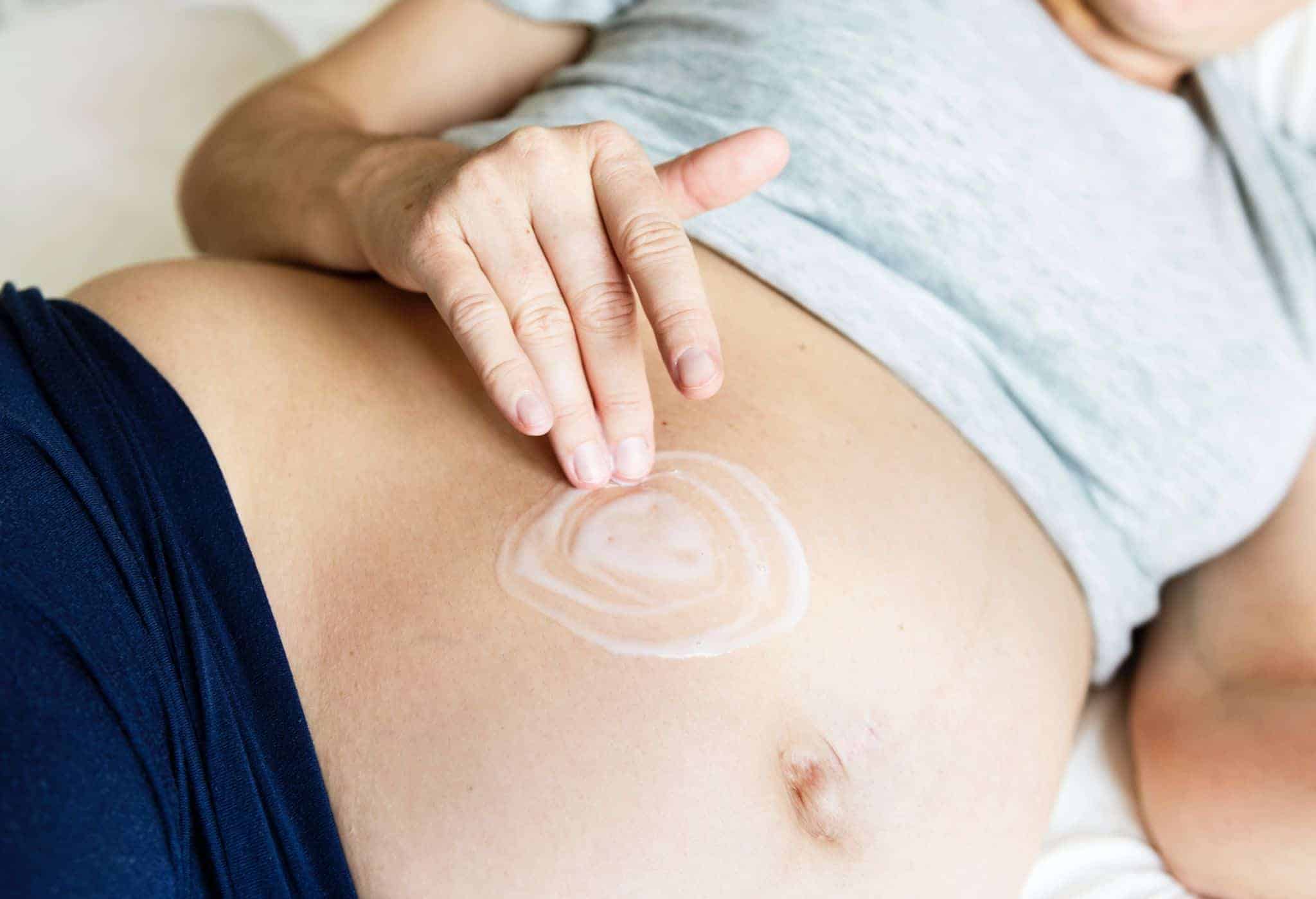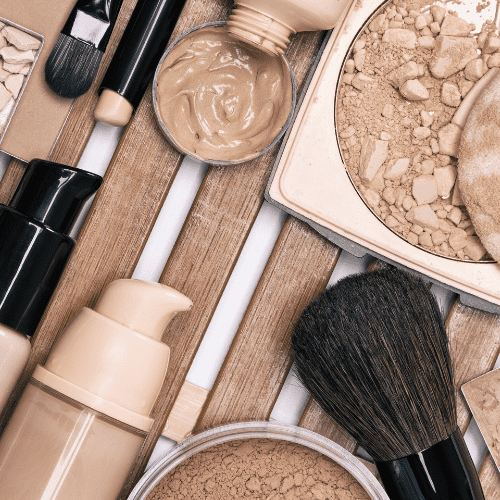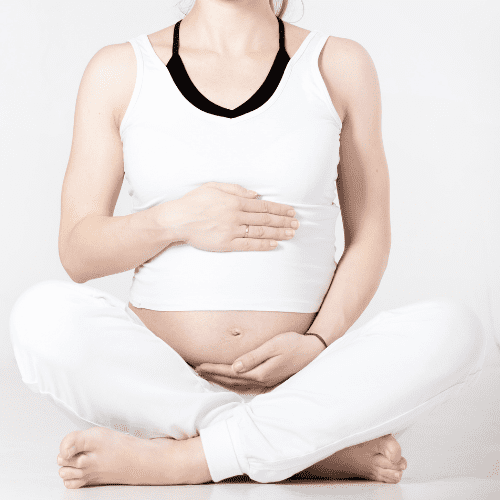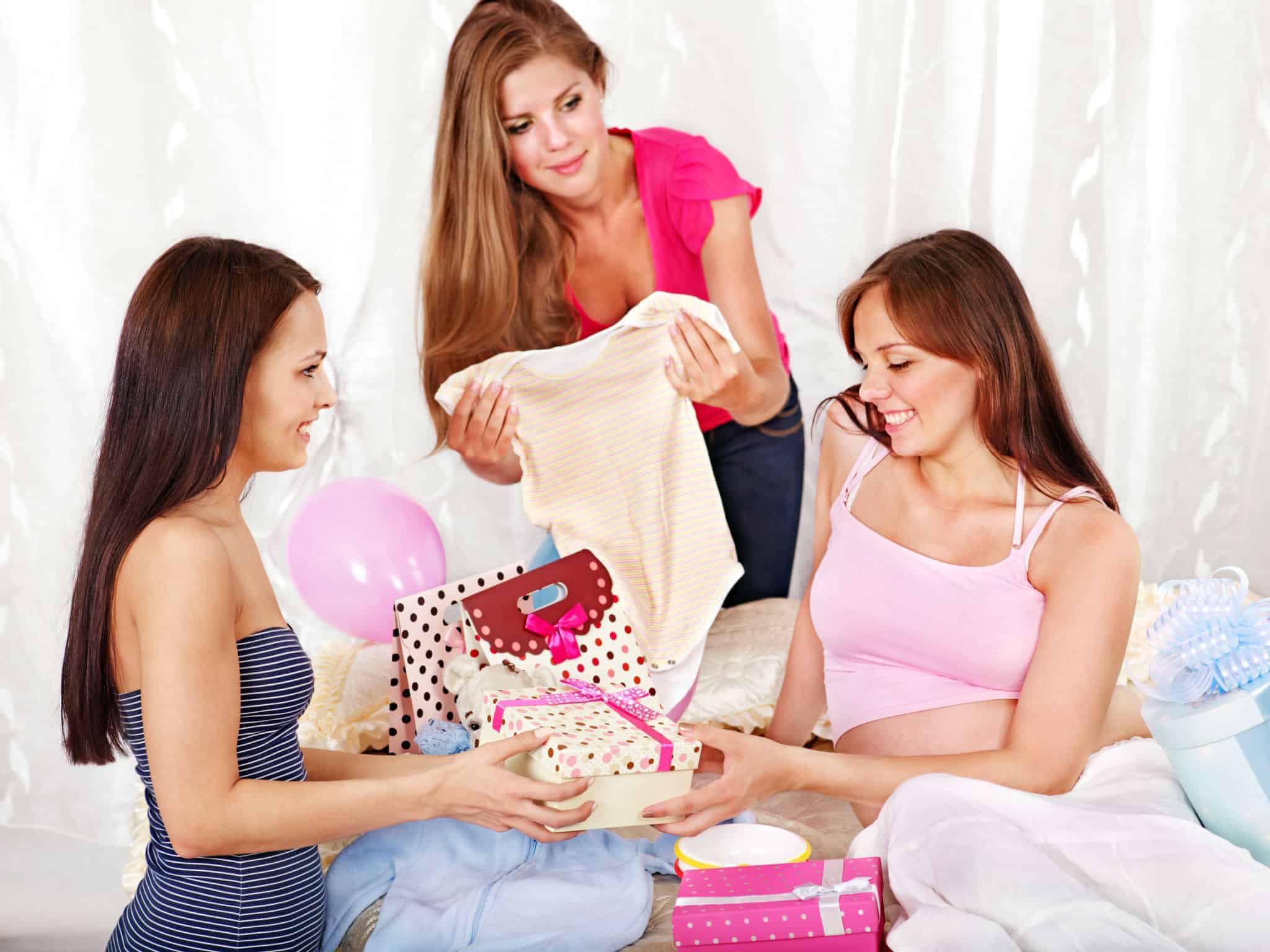For a lot of women showing off their growing baby bump is one of the joys of pregnancy. There is a whole culture around it, with women coming together on internet forums to speculate on the baby’s gender, based on the size and shape of a baby bump and how high or low they carry.
Many women also enjoy planning maternity outfits to include clothing that clings to the shape of their pregnancy bump. So they can be met with compliments about how ‘neat’ their bump is and their pregnancy ‘glow’. But what if you do not have the stereotypically neat baby bump and what do we even mean by using the word neat?
As an Amazon Associate, I earn from qualifying purchases. The links below maybe affiliate links. Please read my disclosure policy for more information.
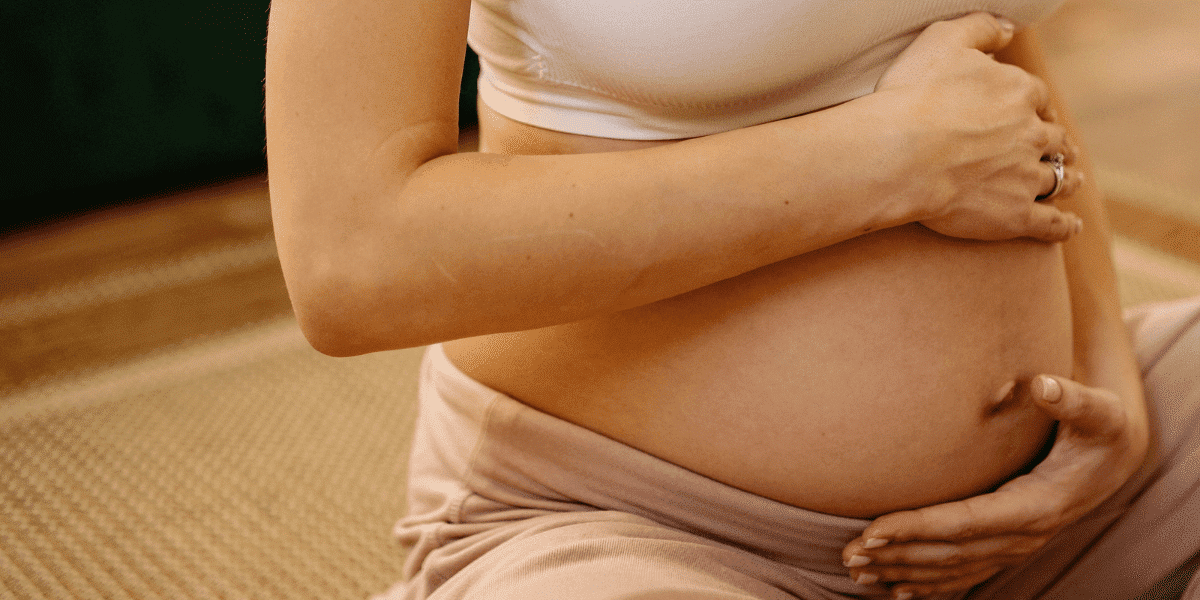
The stereotypical baby bump we are used to seeing featured in the media refers to what is called a D-shaped pregnancy belly because it takes the shape of a capital D when looking at a pregnant woman side onwards.
Not all women carry this way, pregnancy bumps can take various forms, shapes, and sizes and for some women, they don’t even show at all.
In this article, we want to particularly explore the B-shaped pregnancy bump. For a lot of women who develop a B – shaped bump, they can often feel a lot of angst toward the shape and find themselves trawling through internet forums asking women for answers on whether the midline crease will disappear or tips on how to hide it.
A B-shaped pregnancy belly refers to a baby bump that has formed with a crease or ‘waistline’ across the middle. This gives the appearance of a capital B when looking at the bump from the side, as the bump has two curves instead of one.
A B-shaped baby belly isn’t uncommon and does not affect how your little one is growing. But can still leave women with a lot of questions about how it came to be, so let’s address some of these concerns.
What causes a B-shaped bump?
A common misconception is that the crease in a women’s bump is caused by herself by wearing tight clothes, such as leggings. This is because the line sits at waistband level and often resembles the double belly every woman experiences when she is sat down. This is not the case.
There are three main reasons why a baby bump can take the B-shaped form.
Firstly, a woman’s ‘Fascial Health’. Your Fascia is a thin network of connecting tissues that holds your organs; blood vessels, bones, muscles, and nerve fibers in place. These can become damaged and strained by elements of your lifestyle.
Such as; an unbalanced diet, stress, poor posture, dehydration, or an injury to your muscles. So it may be possible that the risk of a B-shaped baby bump occurred before the pregnancy began.
Secondly, the Diastasis Recti. This is the fancy name given to the separation of the two center stomach muscles during pregnancy. This happens as your uterus grows, pushing on these muscles making them longer and weaker. It is also often referred to as divarication.
This is very common in pregnancy. For most women, the muscles correct themselves after birth when the ab muscles regain strength. For women with multiple pregnancies, this could cause a B-shaped baby belly.
Thirdly, the ‘Apron belly’ or more accurately called a pannus stomach, refers to the additional fat deposits in the omentum which is the area under a women’s ab muscles. This often resembles an ‘apron’ giving it its unattractive name. It is most commonly caused by pregnancy and weight gain but isn’t exclusive to women.
Does a B-shaped bump mean I’m overweight?
As one of the predominant causes of a B-shaped pregnancy bump is weight gain, there is the common misconception that a B-shaped bump is directly caused by being overweight.
It is not true. Plus-size women will not always carry a B-shaped bump nor can one be resolved by losing weight. Women who aren’t overweight can also carry with the crease in their waistline.
It is also often wondered whether a B-shaped belly will disappear as pregnancy progresses. Whilst some women on maternity forums have stated that the crease in their bump had vanished by the third trimester, it is not likely to vanish entirely. But rather it smooths out and becomes less noticeable as the pregnancy progresses.
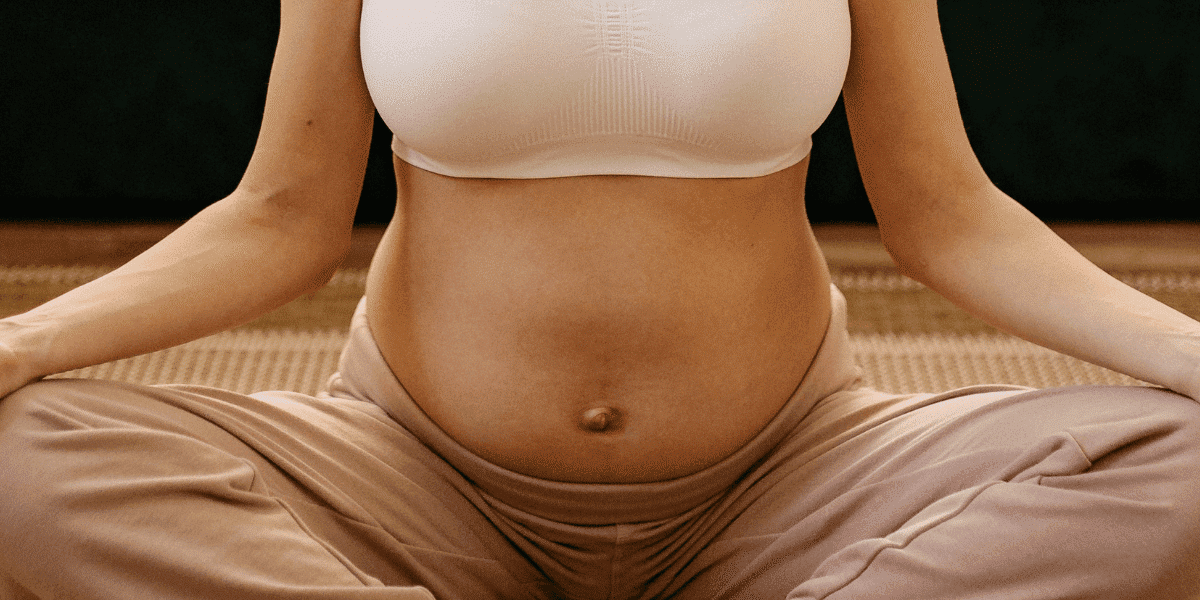
How do I hide it under clothes?
For women who find themself faced with having a B-shaped baby bump the desire to show off their new figure can sadly be taken away. This becomes replaced with a growing need to hide the obvious divide in their waistline.
But having a B-shaped belly doesn’t have to mean you have to miss out on showing off your bump to the world. There are things you can do to change or hide the appearance the crease leaves on your belly whilst still feeling comfortable and confident.
Pregnancy Bands – A quick search into google will bring up hundreds of affordable options of pregnancy bands designed to offer pregnancy and postpartum support for your bump. But what they will also do is smooth out your bump hiding the appearance of the b-shape.
Meaning you can continue to wear that figure-hugging maternity dress or those under the bump jeans you’ve been looking forward to wearing.
Spanx – A favorite on women’s forums, lycra Spanx can help smooth out, shape, and support your growing bump. As your baby is protected and cushioned by the amniotic sac in your womb, slight mild compression from Spanx such as these won’t harm your baby and are safe to use at any stage of pregnancy.
But it is recommended that you only use specifically designed maternity Spanx. Tight-fitting Spanx or waist trainers are not advised. This is because they are not only uncomfortable but there is a small risk of harm associated with this level of constriction.
Layering – There are a couple of little tricks you can use with the clothes from your wardrobe to save you from having to invest in Spanx or a pregnancy band. If you’re pregnant in the winter months you could try layering vests and tops to smooth out the line on your bump.
For the warmer summer months, you can swap out the figure-hugging maxi dresses for loose floaty dresses and tops. If you aren’t feeling confident and want to try hiding your B-shaped bump entirely, you should opt for darker colors.
These will minimize the appearance of the crease when viewed from the front. Horizontal striped tops and dresses work by outlining the shape of your bump but distorting the crease at the waistline.
For a cute fall look, you could even incorporate overalls into your daily wardrobe. This won’t hide your bump altogether but will mask the line in thick material.
Can you prevent a B-Shape baby bump from forming?
Whilst there is no quick trick to make sure you do not grow a B-shaped baby bump there are a couple of lifestyle improvements you can make to minimize the risk.
In particular, if you are planning to get pregnant you can make sure your Fascia (that network of connecting tissues) are in good health by drinking plenty of water, and regularly stretching. Exercises such as yoga and pilates are recommended.
You should also aim to maintain a healthy BMI, which for women is between 25 to 29.9. Anything over 30 is classed as overweight for the majority of women.
Maintaining a healthy weight won’t just minimize the chances of developing a B-shaped pregnancy bump, but also lowers the risk of potentially serious health concerns. Such as; Gestational Diabetes, pre-eclampsia, pre-term delivery, and even a miscarriage or stillbirth.
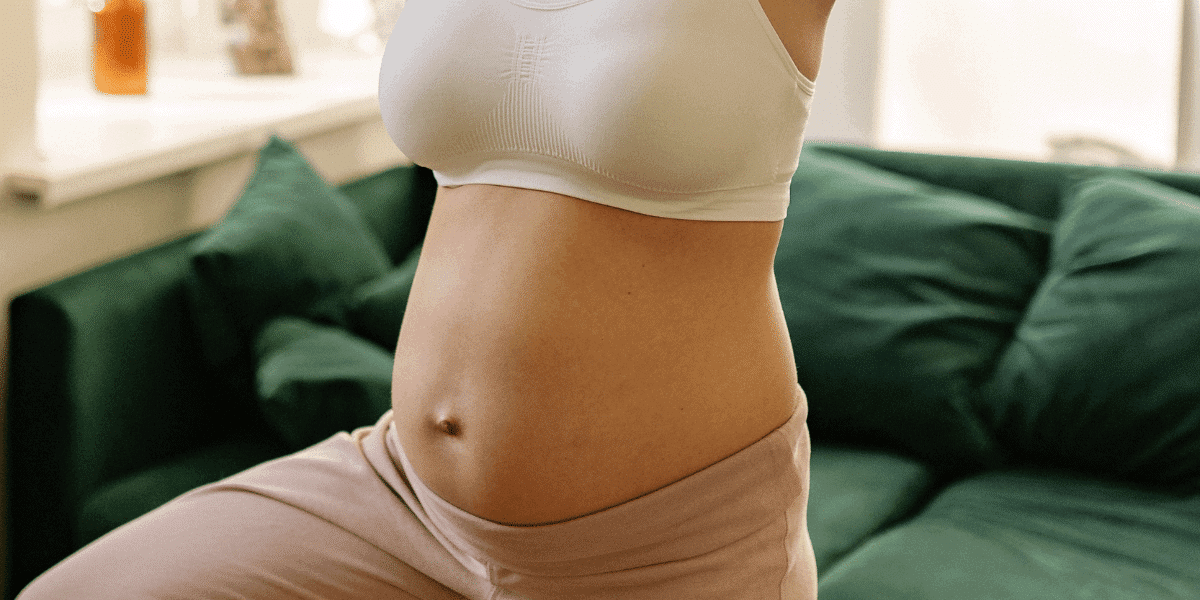
Will a B-shaped belly disappear after I give birth?
The simple answer is yes. Around 6 to 8 weeks after giving birth you will experience a second round of contractions as your uterus contracts and returns to its original size and place in the pelvis.
Women who breastfeed often find this process happens quicker than those that don’t because the hormone Oxytocin released during breastfeeding brings on contractions.
In summary whilst a B-shaped pregnancy bump can cause mixed emotions and is often a disappointment for pregnant women it does not need to be a cause for concern.
Bumps come in all shapes and sizes and change shape many times as you progress through the trimesters.
Some women have the stereotypical D shape from the get-go and some women will never have one at all. If you desire to change the appearance of your bump there are hacks and products out there to give you that smooth outline.
After you give birth it will become a distant memory as you hold your baby in your arms. Your stomach muscles will begin to work their way back down to your prebaby shape.
The main thing to remember is that a B shape bump does not have any effect or cause any harm to your growing baby during pregnancy.

